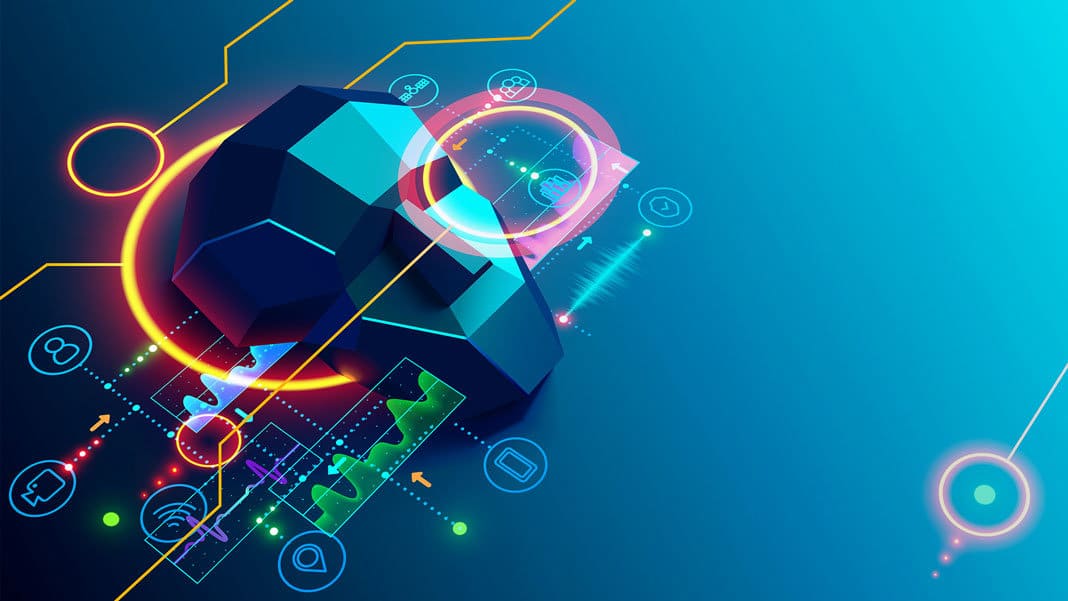Artificial intelligence (AI), is the use of computer science programming to imitate human thoughts and actions by analyzing data and AI and their surroundings. It’s used to solve or anticipate problems and to adapt to various tasks by learning and self-teaching.
AI powers countless programs and services that help society do everyday things, such as connecting with friends and using an email program. The majority of the population have been using AI daily for many years, maybe without realizing they are. Artificial intelligence is categorized into three different types of systems: analytical, human-inspired, and humanized artificial intelligence.
- Analytical AI – characteristics consistent with cognitive intelligence that generates an intellectual representation of the world using learning based on experiences in the past to inform future decisionmaking.
- Human-inspired AI – has elements from cognitive and emotional intelligence and understanding human emotions, and considering them in their decision-making.
- Humanized AI – displays all types of capabilities and can be self-conscious and self-aware in communications.
IMAGE: PIXABAY
The field of AI was founded on the claim that human intelligence can be so explicitly designed that a machined could stimulate it. In the twenty-first century, techniques in AI have experienced a rebirth of developments in computer power, sizeable amounts of data, and theoretical understanding, and AI techniques have been an indispensable part of the technology industry, helping to answer many challenging problems in computer science, software engineering, and operations research.
Although artificial intelligence sounds intimidating to some people, it has been used for decades, and its applications are more mutual that you might envision. These examples of AI prove how you could already be using this intelligence from day to day in your life, both online and online such as email communications, social media, web searching, stores and services, and offline involvements.
1. AI Improves Email Communications
- Google uses AI to certify all emails coming to your inbox are trustworthy. Gmail filters to sort emails into these categories: primary, social, promotions, updates, forums, and spam. This program organizes your email so its easier to get to essential communications.
- Smart replies present away too efficiently respond to emails with simple phrases like “Thanks,” or “Great!” with a click of a button. Smart replies attempt to copy your personal writing style and do an excellent job of representing what you might reply.
- The nudging feature on Gmail reminds you to follow up on emails you have forgotten. Nudges stand out in bold and colorful print, allowing you to quickly glance at a list of emails and recognize the ones that need a response.
2. AI Improves Social Media
- AI makes it simpler for users to locate and communicate with friends and business colleagues.
- Chatbots recognizes words and phrases to deliver a helpful substance to customers who have common questions. Chatbot imitates natural language, replicating conversations as they help with routine tasks such as reserving appointments, acquiring orders, and answering questions.
3. AI Helps With Web Searches
- Google predictive search makes recommendations when you are typing search terms for you to select from the AI action. Predictive searches are founded on data that collects about you, such as location, age, and other personal data. Using AI, the search engine tries to guess what you might be trying to find
- AI is used by lots of banks to personalize experiences on mobile apps. Some of the apps analyze account data in order to customize banking alerts such as bill payment reminders, pre-overdraft alerts, and transfer prompts.
- When an app such as Google Maps gauges traffic and construction times to find the speediest route to get to your destination.
4. AI Powers Travel Experiences
- Ridesharing services such as Uber use AI to establish how long it will take to get from your location to your destination. This AI service gives you an idea of when to expect a driver for food delivery.
- Commercial airline flights are powered by AI technology for the majority of a flight. Pilots reported spending only seven minutes of manually flying the plan during a typical flight.
There are different functions of artificial intelligence: specialized and general AI. Specialized AI is programmed to perform a detailed task. Its programming is intended to be able to learn to perform reliable tasks. Specialized AI has been the more dominant use of artificial intelligence. General AI isn’t restricted to one specific task but can learn and complete many different tasks and functions.
General artificial intelligence is focused on learning and using unsupervised programming to solve problems for various task and circumstances. With the continuous innovation of artificial intelligence, it looks as new concern over ethics, economics, and safety seem to develop with them.
If you are interested in even more technology-related articles and information from us here at Bit Rebels, then we have a lot to choose from.


COMMENTS